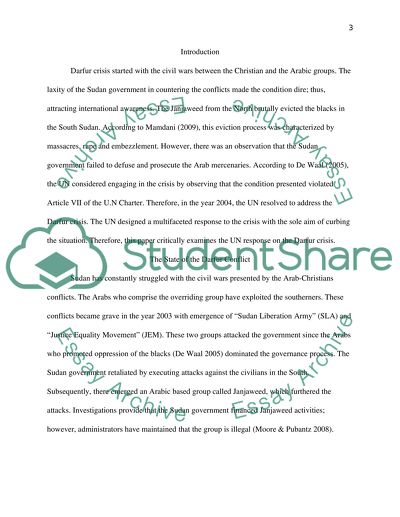Cite this document
(“Critically Assess the UN Response to the Crisis in Darfur Essay”, n.d.)
Retrieved from https://studentshare.org/history/1451842-critically-assess-the-un-response-to-the-crisis-in
Retrieved from https://studentshare.org/history/1451842-critically-assess-the-un-response-to-the-crisis-in
(Critically Assess the UN Response to the Crisis in Darfur Essay)
https://studentshare.org/history/1451842-critically-assess-the-un-response-to-the-crisis-in.
https://studentshare.org/history/1451842-critically-assess-the-un-response-to-the-crisis-in.
“Critically Assess the UN Response to the Crisis in Darfur Essay”, n.d. https://studentshare.org/history/1451842-critically-assess-the-un-response-to-the-crisis-in.


